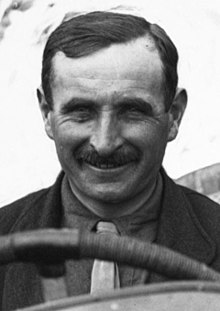| Jean Chassagne | |||||||
|---|---|---|---|---|---|---|---|
 Chassagne in 1914 | |||||||
| Born | Julien Jean Chassagne 26 July 1881 La Croisille-sur-Briance, Haute-Vienne, France | ||||||
| Died | 13 April 1947 (aged 65) La Croisille-sur-Briance, Haute-Vienne, France | ||||||
| Champ Car career | |||||||
| 3 races run over 3 years | |||||||
| Best finish | 15th (1920) | ||||||
| First race | 1914 Indianapolis 500 (Indianapolis) | ||||||
| Last race | 1921 Indianapolis 500 (Indianapolis) | ||||||
| |||||||
| 24 Hours of Le Mans career | |||||||
| Years | 1925–1930 | ||||||
| Teams | Sunbeam, Ariès, Bentley, Paget | ||||||
| Best finish | 2nd (1925) | ||||||
| Class wins | 1 (1925) | ||||||
Julien Jean Chassagne (26 July 1881 – 13 April 1947) was a pioneer submariner, aviator, and French racing driver active 1906–1930. Chassagne finished third in the 1913 French Grand Prix; won the 1922 Tourist Trophy and finished second in the 1925 Le Mans Grand Prix d'Endurance - all in Sunbeam motorcars. He was second in the 1921 Italian Grand Prix with a Ballot, and set speed records and won races at Brooklands and hill climbs internationally.
Chassagne was also associated with the Bentley Boys, who are described as having captured the spirit of the times, partying as hard as they worked. Larger than life, their restless and often reckless love of speed and adventure complemented the big green Bentleys from Cricklewood perfectly.[1] As a result of his association with Bentley Motors, Chassagne Square in Crewe was named in his honour.
Chassagne applied to serve as a pilot during the Great War but under the request of the British Admiralty he joined Sunbeam to advise, develop and test aero engines for the war effort.[2]
- ^ "Bentley Web - Green Power - Racing History - the Bentley Boys". Archived from the original on 9 September 2009. Retrieved 11 November 2009.
- ^ Cite error: The named reference
L’automobiliste, 9was invoked but never defined (see the help page).